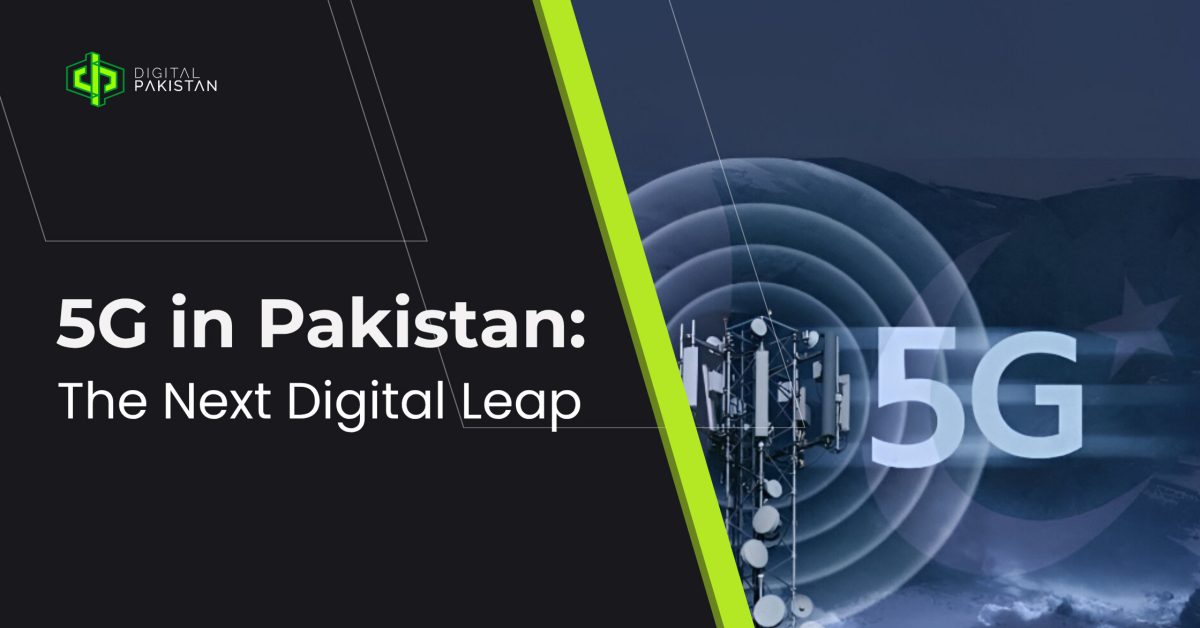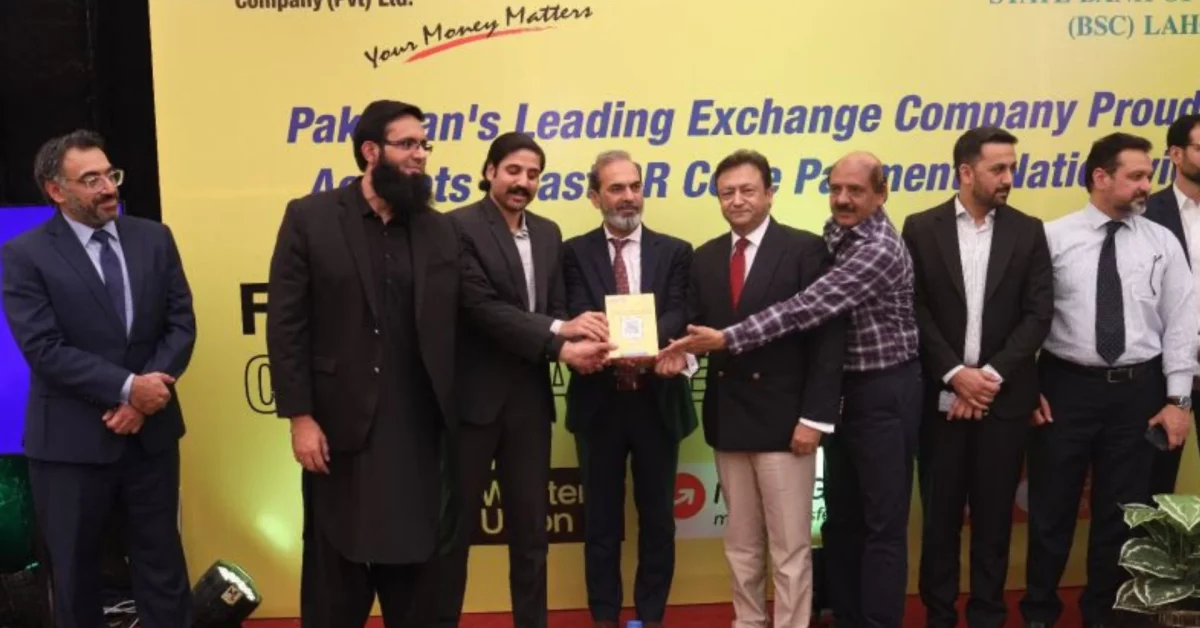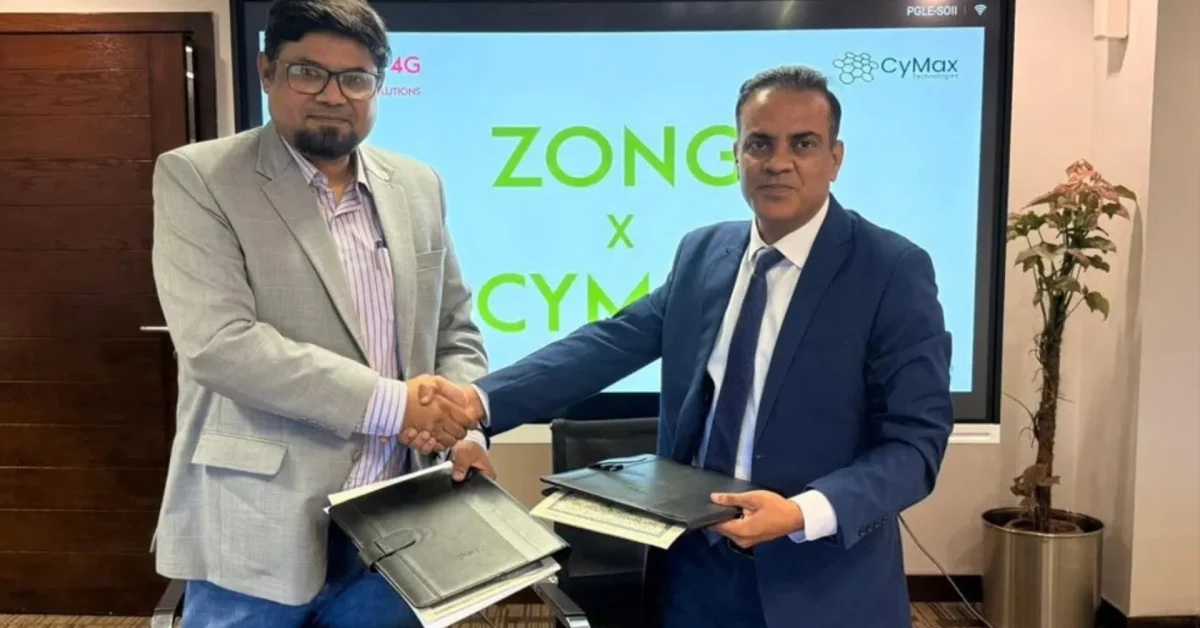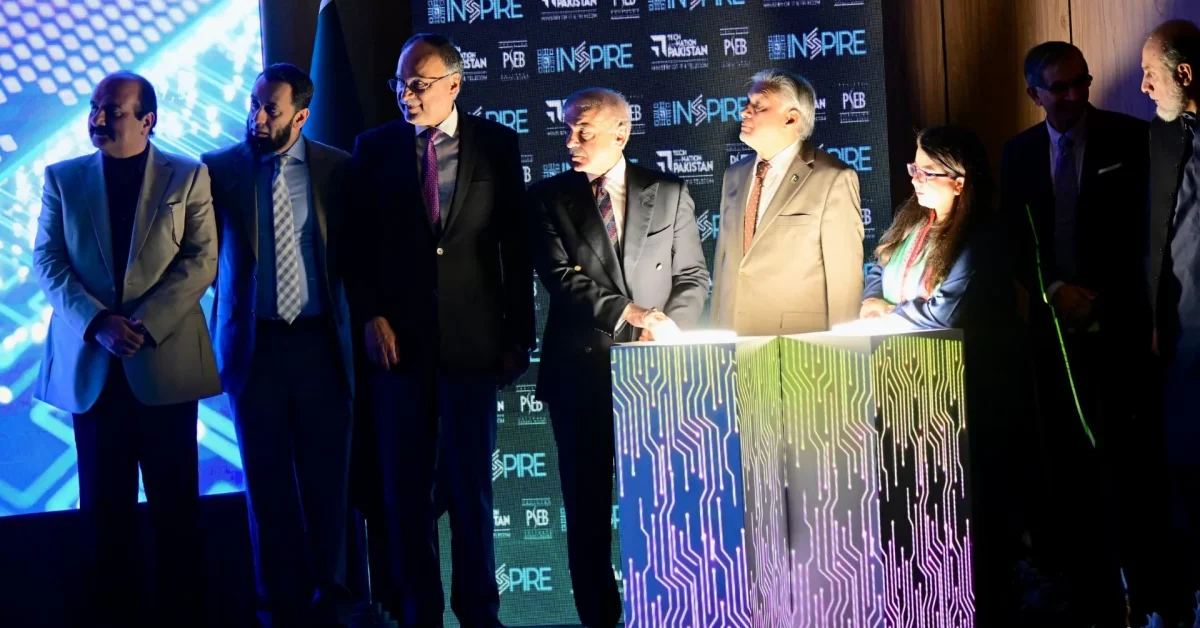
Pakistan Mandates Cybersecurity Standards Across All Industries
October 29, 2025
Pakistan and Saudi Arabia Launch Economic Framework
October 30, 20255G in Pakistan: Timeline, Coverage, Use Cases & Business Impact
The 5G pakistan rollout has officially begun! fancy right? not quite. While telecom operators deploy next-gen networks in major cities, half the country still struggles with basic 4G coverage. That’s the reality of tech adoption in South Asia: messy, uneven, but relentlessly moving forward.
Beyond faster Instagram scrolling, 5G is infrastructure that could transform how businesses operate, how cities function, and how Pakistan positions itself in the regional tech race. With Amazon Kuiper’s satellite internet now entering the conversation, connectivity is more interesting than it’s been in years.
Here’s a complete rundown on what’s actually happening with 5G deployment in Pakistan, what it means for businesses, and whether the infrastructure can deliver on its transformative promises.
What is 5G?

5G is the fifth generation of mobile network technology. If you’ve heard people throwing around terms like “ultra-low latency” and “gigabit speeds,” they’re talking about 5G. But let’s skip the marketing fluff and focus on what matters.
5G offers three main improvements over 4G: it’s significantly faster (potentially 10-100x faster), has much lower latency (milliseconds instead of tens of milliseconds), and can connect way more devices simultaneously without the network collapsing.
The speed thing gets attention because everyone wants faster Netflix. But the real game-changer is latency and device density. Low latency enables things like remote surgery, autonomous vehicles, and real-time industrial automation. High device density makes smart cities and IoT networks actually feasible.
There are different flavors of 5G. Low-band 5G offers wide coverage but speeds barely better than good 4G. Mid-band 5G balances speed and coverage decently. High-band (mmWave) 5G delivers insane speeds but works only in tiny areas because the signal can’t penetrate walls. Pakistan’s deployment focuses mainly on mid-band because it’s practical.
5G Pakistan rollout timeline: Key milestones
Pakistan’s 5G journey has been slower than initially promised, which surprises absolutely no one familiar with Pakistani telecom infrastructure projects.
When did 5G launch in Pakistan?
Commercial 5G services officially launched in Pakistan in December 2022 when Jazz and Zong both went live. Jazz started testing 5G in early 2022, showing off demos and running pilot projects. Zong wasn’t far behind, pushing its own trials.
Before commercial launch, there was the usual spectacle of press releases, political photo ops, and announcements declaring Pakistan was entering the “digital revolution.” The Pakistan Telecommunication Authority (PTA) had conducted spectrum auctions earlier that year, allocating frequencies to operators who’d actually invest in 5G infrastructure.
The launch was limited. We’re not talking nationwide coverage or even full city coverage. It was concentrated deployments in specific areas of major cities, basically enough to say “we have 5G now” without actually delivering comprehensive service.
Major cities with 5G coverage

Islamabad and Rawalpindi got 5G first because that’s where government attention focuses. Lahore followed quickly since it’s Pakistan’s cultural and commercial hub. Karachi, despite being the largest city and economic center, got coverage in phases across different zones.
As of 2025, 5G coverage Pakistan offers is concentrated in these cities plus selective expansion to Faisalabad, Multan, Peshawar, and Quetta. Coverage within these cities varies wildly. You might get solid 5G in one neighborhood and nothing two blocks away.
The “major cities” coverage is mostly premium areas: business districts, upscale residential zones, universities, and commercial centers. Working-class neighborhoods and peripheral areas remain firmly in 4G or 3G territory.
Expected nationwide expansion dates
Telecom operators are promising widespread 5G by 2027-2028. Take that timeline with industrial-grade skepticism. Pakistan’s telecom expansions always take longer than announced.
The expansion depends on multiple factors: spectrum availability, infrastructure investment, tower deployment, and whether operators can make money on 5G to justify further investment. Rural areas will wait much longer, probably well into the 2030s, before seeing any 5G.
The government talks about connecting all of Pakistan to high-speed internet, but the economics don’t work. Building infrastructure for sparse rural populations yields terrible returns. Unless subsidies or innovative solutions emerge, nationwide 5G remains aspirational, not realistic.
Current 5G coverage in Pakistan by telecom operator
Pakistan’s telecom market is dominated by four players, but only two are serious about 5G right now.
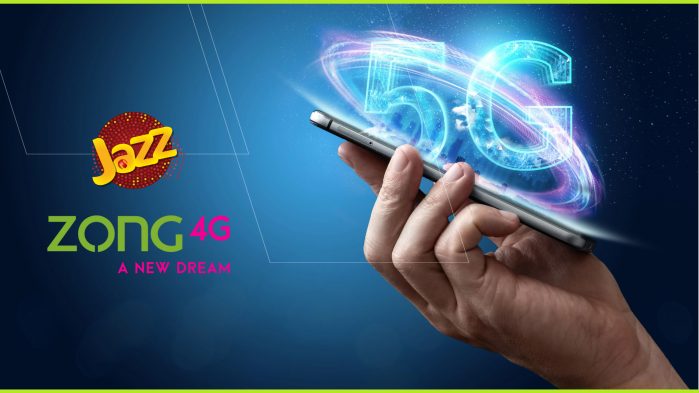
Jazz 5G network coverage
Jazz, Pakistan’s largest telecom operator with over 73 million subscribers, launched 5G in December 2022. They positioned themselves as the 5G leader, moving fastest with deployment.
Jazz’s 5G coverage focuses on Islamabad, Lahore, and Karachi initially, expanding to other cities gradually. They’re using mid-band spectrum for balance between speed and coverage. Reported speeds vary from 200 Mbps to over 1 Gbps in optimal conditions, though real-world experience is usually in the 200-500 Mbps range.
Jazz’s strategy targets enterprise customers and premium consumers first. They’re pushing 5G home broadband as an alternative to fixed-line internet, which makes sense in areas where fiber deployment is difficult. Business districts get priority because that’s where revenue lives.
Coverage maps show 5G available in major commercial areas, but residential coverage is patchy. Jazz is expanding, but the pace isn’t exactly lightning-fast.
Zong 5G availability
Zong, part of China Mobile, launched 5G simultaneously with Jazz. They’ve got strong backing from the parent company, giving them resources for infrastructure investment.
Zong’s 5G rollout covers similar cities as Jazz: Islamabad, Lahore, and Karachi, with expansion to other urban centers. Their speeds are comparable, and coverage patterns mirror Jazz’s strategy of prioritizing commercial areas and premium zones.
Zong’s advantage is their existing infrastructure investment and willingness to pour money into network upgrades. They’re aggressive with pricing, often undercutting Jazz to gain market share. Their 5G packages target both consumers and businesses, though adoption remains limited by device availability and pricing.
Ufone and Telenor 5G plans
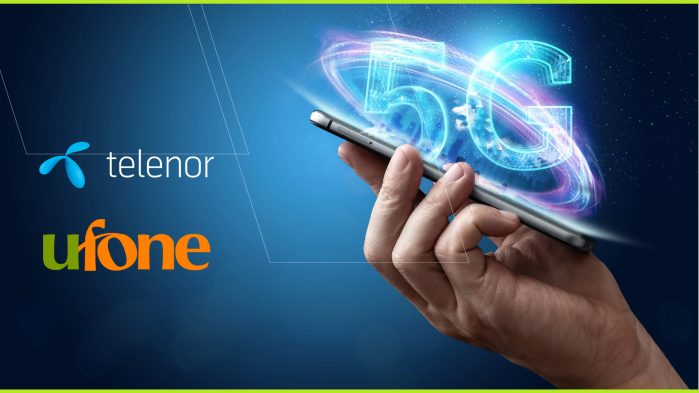
Ufone and Telenor are playing wait-and-see. Neither has launched commercial 5G services as of 2025, though both claim they’re preparing.
Ufone’s been struggling financially and recently merged with Telenor Pakistan, creating complications for independent 5G deployment. The merged entity is focused on stabilizing operations before investing heavily in 5G.
Telenor’s announced testing and trials but hasn’t committed to launch dates. Their strategy appears to be letting Jazz and Zong bear the early infrastructure costs while they optimize 4G coverage and profitability.
Realistically, Ufone and Telenor won’t be major 5G players until 2026 at earliest, possibly later. The market might consolidate further, or they’ll target different customer segments than the 5G leaders.
Business impact of 5G adoption in Pakistan
5G isn’t just a consumer upgrade. It’s infrastructure that changes how businesses can operate, assuming they can actually access it and afford it.
Economic growth opportunities
5G business impact in Pakistan could be significant if adoption accelerates. Studies estimate 5G could add billions to GDP over the next decade by enabling new industries, improving productivity, and attracting tech investment.
The economic opportunity comes from several areas: telecommunications itself becomes more valuable, tech startups can build services requiring high-speed connectivity, manufacturing can modernize with automation, and logistics can optimize with IoT tracking.
Pakistan’s IT exports are growing, and 5G infrastructure makes the country more attractive for tech operations. Remote work becomes more feasible with reliable high-speed internet. Business process outsourcing can handle more complex operations.
But here’s the reality check: economic impact requires actual widespread adoption. If 5G remains limited to small urban pockets and expensive for most businesses, the economic benefits stay theoretical.
Digital transformation for enterprises
Enterprises can use 5G for cloud computing without the lag that makes current connections frustrating. Video conferencing becomes actually reliable. Large file transfers happen in seconds instead of hours.
Manufacturing plants can deploy industrial IoT sensors throughout facilities, monitoring equipment in real-time and predicting failures before they happen. Warehouses can use automated inventory systems with connected robots and real-time tracking.
Retail businesses can create immersive shopping experiences with AR/VR, though Pakistan’s retail sector is nowhere near ready for that. Banks can deliver faster, more responsive mobile services and explore IoT-based security systems.
The challenge is cost. Enterprise 5G packages are expensive, and many Pakistani businesses are price-sensitive. ROI needs to be clear and fast, or adoption will be slow regardless of technical capabilities.
Impact on e-commerce and startups
E-commerce startups can offer better customer experiences with faster loading, high-quality product videos, and AR try-before-you-buy features. Delivery logistics improve with real-time tracking and route optimization.
For tech startups, 5G enables entirely new product categories. Streaming services become more viable. Real-time multiplayer gaming can actually work. Telemedicine startups can deliver high-quality video consultations without connectivity anxiety.
Content creators and digital marketing agencies benefit from faster uploads, better collaboration tools, and ability to produce higher-quality content without technical limitations.
But the startup ecosystem faces the same problem as always: limited funding, small addressable market, and infrastructure that’s not quite good enough yet. 5G helps, but it’s not a magic solution to Pakistan’s startup challenges.
Amazon Kuiper: Satellite internet coming to Pakistan

Here’s where things get interesting. While terrestrial 5G struggles with coverage and infrastructure costs, satellite internet is preparing to disrupt the entire game.
What is Amazon Kuiper
Amazon Kuiper is Amazon’s low Earth orbit (LEO) satellite internet constellation project. Think Starlink’s competitor, backed by Amazon’s endless resources and Jeff Bezos’s space obsession.
Kuiper plans to deploy over 3,200 satellites providing broadband internet globally, including places where traditional infrastructure is impossible or uneconomical. The project’s been in development for years, with satellite launches ramping up in 2024 and 2025.
Unlike traditional satellite internet that’s slow and laggy because satellites orbit 35,000 km away, LEO satellites orbit at 600-1,200 km. Lower orbit means lower latency and faster speeds, comparable to terrestrial broadband.
Amazon’s positioning Kuiper as infrastructure for the unconnected and underconnected. In Pakistan’s context, that’s potentially massive since huge portions of the country lack decent internet access.
How does Amazon Kuiper work?
Kuiper works by creating a network of satellites orbiting Earth, each communicating with ground stations and user terminals. Users need a specialized antenna (think pizza-box-sized dish) that connects to satellites passing overhead.
The satellites create overlapping coverage zones, ensuring users always have connectivity as satellites move across the sky. Ground stations connect the satellite network to the terrestrial internet backbone, routing traffic efficiently.
User experience is meant to be simple: install antenna, point it at the sky, get internet. No digging trenches for fiber, no negotiating with local telecom providers, no waiting for infrastructure that never arrives.
Speeds are expected to range from 100 Mbps to 1 Gbps depending on service tier. Latency should be under 30 milliseconds, competitive with terrestrial connections. Weather can affect signal quality, but modern systems are reasonably resilient.
How Kuiper complements 5G infrastructure
Kuiper and 5G aren’t competitors exactly, they’re complementary. 5G excels in dense urban areas where infrastructure investment makes economic sense. Kuiper shines in rural, remote, or difficult terrain where terrestrial infrastructure is impractical.
In Pakistan, this combination could be transformative. Urban centers get 5G for maximum speed and capacity. Rural areas get Kuiper for basic connectivity that’s still light-years better than current options (or no options).
Businesses could use Kuiper as backup connectivity when terrestrial networks fail, which happens regularly in Pakistan. Telecom operators might use Kuiper for backhaul in areas where fiber doesn’t reach.
The Pakistan Bangladesh India tech comparison becomes more interesting with satellite internet. Countries with difficult geography or weak infrastructure can leapfrog traditional deployment models.
Expected launch timeline in Pakistan
Amazon hasn’t announced specific Pakistan launch dates for Kuiper, but the system is expected to have initial service availability in 2025 with broader rollout through 2026-2027.
Regulatory approval is necessary. PTA will need to authorize Kuiper operation in Pakistan, which could be straightforward or complicated depending on political factors and existing telecom operator pressure.
Pricing will determine adoption. If Kuiper’s affordable for middle-class Pakistanis and businesses, adoption could be rapid. If it’s priced for premium markets only, impact will be limited.
The interesting scenario is Amazon Kuiper Pakistan becoming the solution for underserved areas while 5G handles cities. Together, they could finally address Pakistan’s connectivity gaps that terrestrial infrastructure alone hasn’t solved.
Real-world use cases of 5G in Pakistan
Beyond speed tests and tech demos, what’s 5G actually doing in Pakistan right now?
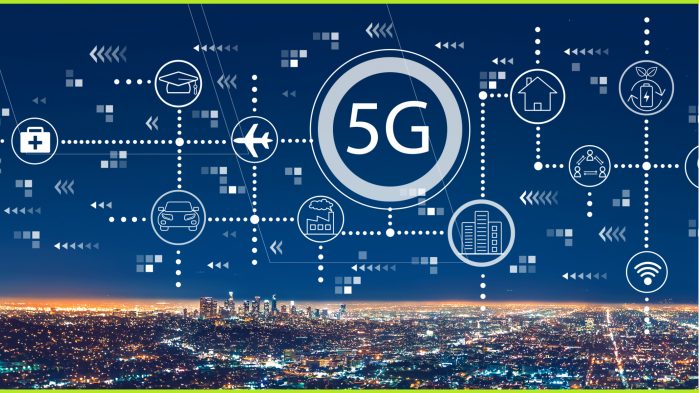
Enhanced mobile broadband for consumers
The most obvious use case is just better internet on phones. YouTube videos load instantly. Video calls don’t freeze awkwardly. Game downloads that took an hour finish in minutes.
For consumers in coverage areas, 5G means ditching unreliable home broadband for wireless. Several users report using 5G home routers as primary internet, getting better performance than their previous DSL or cable connections.
The experience depends entirely on location. In optimal coverage zones, it’s genuinely impressive. Move a few blocks, and you’re back to 4G or worse.
Smart city initiatives and IoT deployment
Pakistani cities are experimenting with smart city concepts, and 5G enables some genuinely useful applications. Traffic management systems using connected cameras and sensors can optimize signal timing and reduce congestion.
Lahore’s tested smart parking systems where sensors detect available spots and direct drivers, reducing time wasted circling blocks. Islamabad’s exploring environmental monitoring with air quality sensors throughout the city.
Water and electricity utilities can use IoT meters for real-time consumption monitoring, reducing theft and improving efficiency. Waste management could optimize collection routes based on bin fill levels.
These projects are mostly pilot stage, not citywide deployment. But they demonstrate what’s possible with 5G infrastructure if investment and political will align.
Healthcare and telemedicine applications
Pakistan’s healthcare system is overwhelmed and geographically uneven. 5G enables telemedicine solutions that could genuinely help.
Doctors in Karachi or Lahore can consult with patients in Balochistan or rural Sindh via high-quality video. Remote diagnostics using connected medical devices become feasible. Emergency consultations can happen over reliable connections.
Some hospitals are testing remote surgery assistance where specialists guide local doctors through procedures via real-time video. It’s not full robotic remote surgery yet, but it’s valuable for knowledge transfer and reducing medical errors.
Mental health services can reach people who’d never visit a psychiatrist due to stigma or accessibility. Online therapy via smooth, private video connections removes barriers.
The challenge is adoption. Doctors need training, patients need devices and literacy, and payment systems need to work. Technology’s ready, but the ecosystem around it is still developing.
Industrial automation and manufacturing
Pakistani factories are generally not high-tech, but some manufacturers are exploring automation enabled by 5G connectivity.
Textile manufacturers can use connected machines monitoring production in real-time, identifying issues before they cause downtime. Quality control systems using computer vision can spot defects humans miss.
Automotive assembly plants can coordinate complex processes with connected robots and sensors ensuring precision. Supply chain visibility improves with IoT tracking of parts and materials.
The pharmaceutical industry can use environmental monitoring ensuring proper storage conditions for sensitive products, with alerts if temperature or humidity deviates.
Adoption is limited to larger, more sophisticated operations. Small and medium enterprises, which dominate Pakistan’s economy, aren’t investing in 5G-enabled automation yet. Cost and knowledge gaps are real barriers.
Challenges facing 5G expansion in Pakistan
Let’s talk about why 5G isn’t expanding as fast as the press releases suggest it should.

Infrastructure and investment gaps
Building 5G networks is expensive. Each cell tower needs upgraded equipment. Fiber backhaul must connect towers to core networks. Power supply must be reliable, which is problematic in Pakistan where electricity is inconsistent.
Telecom operators are businesses, not charities. They invest where they can make money. Dense urban areas with high-income users make sense. Rural areas with dispersed, price-sensitive populations don’t.
The government’s not subsidizing infrastructure enough to change the economics. Public-private partnerships are talked about but rarely executed well. International investment is cautious given Pakistan’s economic volatility.
The infrastructure gap between Pakistan and regional competitors is widening. India’s rolling out 5G aggressively across hundreds of cities. Pakistan’s crawling by comparison.
Device affordability and adoption rates
5G networks are useless if people don’t have 5G devices. Smartphone penetration in Pakistan is high, but 5G-capable phones are expensive.
Budget smartphones that dominate Pakistan’s market are 4G devices. 5G phones start around PKR 40,000-50,000, which is beyond most consumers’ budgets. Flagship devices with the best 5G radios cost 150,000+ PKR.
Device affordability directly limits adoption. Telecom operators can’t justify expanding 5G infrastructure if the addressable market is tiny. It’s a chicken-and-egg problem: people won’t buy 5G phones until coverage improves, operators won’t improve coverage until people have 5G phones.
Chinese manufacturers are bringing cheaper 5G devices to market, which will help over time. But the price gap between 4G and 5G devices remains a barrier.
Regulatory and spectrum allocation issues
Pakistan’s regulatory environment is improving but still frustrating. Spectrum allocation is political, with decisions influenced by factors beyond pure technical or economic optimization.
PTA’s auction processes work, but spectrum pricing sometimes prioritizes government revenue over adoption acceleration. High spectrum costs force operators to charge higher prices, limiting accessibility.
Regulatory uncertainty around data protection, content monitoring, and internet shutdowns makes long-term planning difficult. Operators invest billions, then face arbitrary shutdowns for political reasons, destroying business cases.
Coordination between government agencies is poor. Ministry of IT, PTA, telecom operators, and provincial governments don’t always align, creating delays and inefficiencies.
The future of 5G and connectivity in Pakistan
Where’s this all heading? Let’s separate wishful thinking from probable outcomes.
Pakistan’s 5G future depends on three factors: economic stability, regulatory consistency, and technology evolution. If the economy stabilizes and government policy supports investment, 5G could expand significantly by 2027-2028. If instability continues, expansion will stall.
The more interesting future involves hybrid connectivity. 5G for urban areas, Kuiper or similar satellite internet for rural and remote areas, and 4G filling gaps. This multi-technology approach matches Pakistan’s geography and economics better than trying to force universal 5G.
Edge computing will become important as 5G matures. Processing data closer to users reduces latency further and enables applications impossible with cloud-only architectures. Pakistani tech companies could build edge infrastructure services, creating new business opportunities.
Private 5G networks for enterprises, industrial zones, and smart cities will grow faster than consumer 5G. Businesses can justify costs through productivity gains. Government technology zones might deploy private 5G networks attracting tech companies needing reliable connectivity.
The wildcard is whether Pakistan can leverage 5G for economic transformation or if it remains a luxury for the privileged few.
If 5G becomes infrastructure enabling broad digital transformation, Pakistan’s tech sector could accelerate significantly. If it remains limited availability and high cost, the digital divide widens and regional competitiveness suffers.
Conclusion
5G is rolling out unevenly in Pakistan, led by Jazz and Zong in major cities, with real applications emerging in smart cities, telemedicine, and industrial automation. Amazon Kuiper’s satellite internet could fill gaps where terrestrial infrastructure can’t reach economically. But infrastructure costs, device affordability, regulatory uncertainty, and economic instability remain significant barriers to widespread adoption.
Pakistan faces a critical choice: invest properly and build transformative connectivity infrastructure, or settle for limited deployment serving elite urban markets. For now, 5G is here in some area codes, and while it is worth exploring in those coverage zones, most Pakistanis face years of waiting or need satellite alternatives. The next few years will determine whether Pakistan’s connectivity potential becomes reality or remains another missed opportunity.
FAQs
Is 5G available in Pakistan?
Yes, since December 2022. Jazz and Zong offer 5G in major cities like Islamabad, Lahore, and Karachi, focusing on commercial areas, business districts, and premium residential zones. Rural areas and most tier-2 cities remain without coverage.
How to use 5G in Pakistan?
You need three things: a 5G-capable phone, a Jazz or Zong SIM with a 5G data package, and location within coverage areas. Enable 5G in your phone’s Mobile Network settings. Note that 5G packages cost more than 4G, and coverage remains limited even in major cities.
Jazz 5G launch date in Pakistan?
Jazz launched commercial 5G in December 2022 alongside Zong, following trials earlier that year. They’re Pakistan’s largest 5G operator by subscribers, though expansion has been slower than initially projected.

